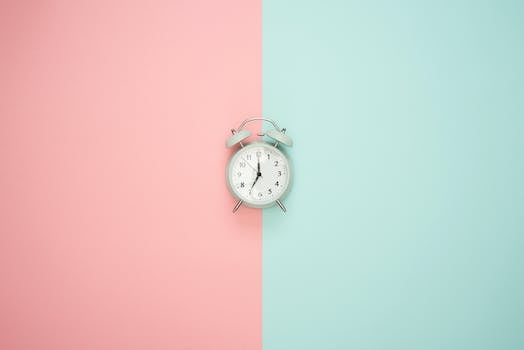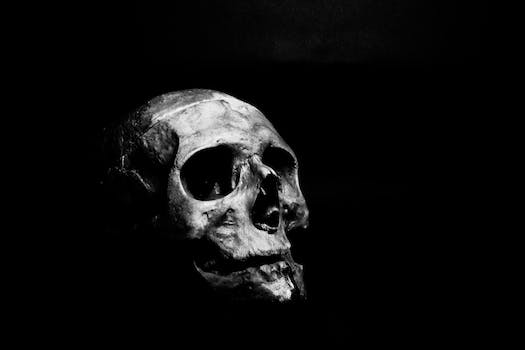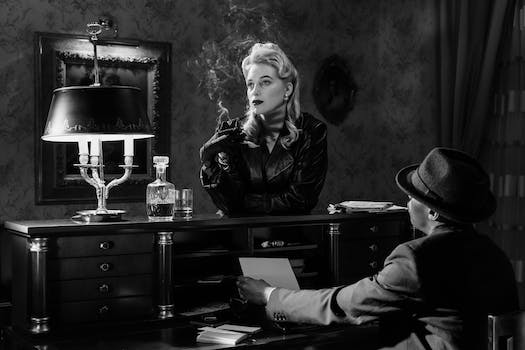For many years, audiences have relied on horror films to satisfy their need for a good scare. There are plenty of scary stories to keep you up at night, from the earliest silent films to the most recent blockbusters. Based on their ability to make our blood run cold and our palms sweat, this article will rank the top ten scariest horror films of all time. These movies will give you the chills whether you’re a seasoned horror lover or just seeking for a good scare.
- 1. The Exorcist
- 1.1. Plot Summary
- 1.2. Production and Release
- 1.3. Impact on Culture
- 1.4. Cinematography and Soundtrack
- 1.5. Legacy and Sequels
- 2. The Shining
- 2.1. Plot Summary
- 2.2. Adaptation from Book to Screen
- 2.3. Stanley Kubrick’s Direction
- 2.4. Jack Nicholson’s Performance
- 2.5. Symbolism and Hidden Meanings
- 3. Psycho
1. The Exorcist
A timeless horror classic, The Exorcist has been watched by generations. In this 1973 film, a little girl falls under the influence of a demonic force. The pea soup vomiting and head-spinning are two of the most memorable moments from the film. It’s a must-see for horror movie buffs, but it’s not for the weak of stomach.
1.1. Plot Summary
In 1973, the terrifying film The Exorcist was released. The film follows a little girl named Regan who begins displaying symptoms that medical professionals are unable to diagnose. Chris’s mother does everything she can to aid her child, but to no avail. Desperate, she seeks help from two priests, who try to cast out the monster that has taken possession of Regan. It’s widely regarded as one of the scariest horror films of all time due to its many powerful and unsettling sequences.
1.2. Production and Release
Directed by William Friedkin and adapted on William Peter Blatty’s novel of the same name, The Exorcist was released to the public in 1973. The film follows Regan, a young girl who becomes possessed by a sinister force. Over $441 million was made from it around the world, and it was widely praised by critics. It has become a classic of the horror film industry and is regularly ranked among the all-time scariest films.
1.3. Impact on Culture
The Exorcist is widely regarded as one of the scariest and most disturbing films of all time. Its influence on culture at large is incalculable, as it set a new bar for horror movies and inspired a slew of imitators. The film’s influence may be observed in the numerous horror films and television shows that explore similar themes of possession and demonic entities.
1.4. Cinematography and Soundtrack
The Exorcist is a timeless horror film that has the power to frighten viewers even now. The film’s photography and music are two of its many strengths. William Friedkin, the film’s director, employed a number of cinematic devices to heighten the audience’s sense of unease and anxiety. Friedkin kept his viewers on the edge of their seats by the use of shadows and darkness, extreme close-ups, and dizzying camera angles. Mike Oldfield’s score for the film is just as evocative and unforgettable. The movie successfully evokes a sense of fear and panic through its use of spooky chants and haunting songs. The cinematography and music of The Exorcist combine to make it a legendary horror film.
1.5. Legacy and Sequels
Released in 1973, The Exorcist is a timeless classic in the horror genre. Its impact on subsequent horror films is a testament to its lasting significance. Because of the film’s popularity, two more installments—Exorcist II: The Heretic and The Exorcist III—were made. These sequels followed the story of Regan’s possession and the priest who exorcised her, but they were not as well received as the original. Fans of the horror genre should definitely check out The Exorcist, which has only grown in fame because to its history and numerous sequels.
2. The Shining
Stanley Kubrick’s The Shining is a legendary horror film adapted from Stephen King’s novel. Jack Torrance, a writer and sober alcoholic, works as the Overlook Hotel’s winter caretaker in the film. Jack’s mental instability and the hotel’s sinister history deepen as the winter wears on. Famous sequences from The Shining include the scary twin sisters and the blood-filled elevator, all of which contribute to the film’s horrific atmosphere and score. Anyone who enjoys scary movies should watch it.
2.1. Plot Summary
Stanley Kubrick’s The Shining is a legendary horror film adapted from Stephen King’s novel. Jack Nicholson plays the title character, a writer in financial straits who spends the winter as the custodian of the remote Overlook Hotel in Colorado. Jack invites his family, played by Shelley Duvall’s Wendy and Danny Lloyd’s kid, to the hotel, where they become trapped when the snow starts falling and the hotel loses contact with the outside world. Jack is driven to madness and violence by the hotel’s terrible history and ghostly presence.
2.2. Adaptation from Book to Screen
The Shining is a classic case of a film that does the source material justice. The film, based on a novel by Stephen King and directed by Stanley Kubrick, follows Jack Torrance and his family as they spend the winter as the guardians of the remote Overlook Hotel. The terrible finale occurs when Jack’s sanity continues to erode and the hotel’s sinister history is revealed. The film isn’t completely faithful to the novel, but it’s nonetheless a classic that has terrified moviegoers for decades.
2.3. Stanley Kubrick’s Direction
The spooky atmosphere and strong psychological horror in Stanley Kubrick’s The Shining are two of the film’s most frequently cited strengths. The unsettling atmosphere is created by Kubrick’s meticulous attention to detail, from the eerie score to the unforgettable images of the twin girls and the blood-filled elevator. The long, slow camera moves and the protagonists’ seclusion in the large, deserted hotel only serve to heighten the tension. Kubrick’s mastery of the horror genre is on full display in The Shining, which has endured as a cult classic.
2.4. Jack Nicholson’s Performance
One of the best horror movie performances ever seen was given by Jack Nicholson in the 1980s. His performance as Jack Torrance, a struggling author who goes mad while taking care of an isolated hotel, is chilling and captivating. Nicholson’s performance in The Shining is what makes it a classic horror film, from his crazy facial expressions to his hysterical laughing in the famous “Here’s Johnny!” sequence.
3. Psycho
The famous horror picture Psycho (1960), directed by Alfred Hitchcock, continues to frighten viewers to this day. At the Bates Motel, Marion Crane meets Norman Bates, a young man with a troubled past, after she steals money from her employer. What happens next is one of the most memorable and horrific scenes in the annals of horror. You’ll be on the edge of your seat from the very first scene of this masterpiece of suspense and psychological horror.
3.1. Plot Summary
Alfred Hitchcock’s Psycho is a legendary horror film. The story follows secretarial protagonist Marion Crane as she flees the law after stealing $40,000 from her employer. The Bates Motel is where Alice stays, where she meets the motel’s proprietor, Norman Bates. As the plot develops, it becomes apparent that Norman is hiding something and that the motel is not what it seems to be. The film’s unexpected finale and memorable shower scene have become standard fare in the horror genre.
3.2. Hitchcock’s Direction and Techniques
Hitchcock’s direction and cinematic techniques are what elevate Psycho to the level of a horror classic. Every sequence, from the opening credits to the famous shower scene, is designed to keep the audience on the edge of their seats. Hitchcock heightens the fright using close-ups and fast edits, and the film’s spooky atmosphere is the result of his manipulation of sound and music. Psycho’s frightening atmosphere comes from Norman Bates’s twisted mind as well as the film’s unexpected ending.
3.3. Impact on the Horror Genre
The dramatic surprise ending and psychological horror components of Alfred Hitchcock’s 1960 film Psycho completely reworked the horror genre. The shower scene in which Marion Crane is murdered by an unknown assailant has gone down in film history as a cinematic classic. Numerous subsequent horror films, from slasher flicks to psychological thrillers, clearly show the influence of Psycho. In the eyes of horror fans everywhere, it will always be a timeless classic.
3.4. Marion Crane’s Character Arc
The development of Marion Crane’s character in Psycho is among the most memorable of any horror film protagonist. She is introduced to the audience as a destitute lady who robs her employer and then goes on the run. As the novel develops, though, she becomes a more likable and understandable protagonist who must face her own vulnerabilities and concerns. By the film’s final frame, Marion has completed her journey full circle, becoming a tragic victim of the film’s harrowing events.
3.5. The Famous Shower Scene
One of the most memorable and chilling scenes in the history of horror films is the shower scene from Alfred Hitchcock’s Psycho. The scenario is shot and edited expertly, building suspense and dread through fast cuts, ominous music, and the use of black and white film. Audiences are left on the edge of their seats by the startling and unexpected murder of Marion Crane in the shower. Numerous films have tried to replicate the sequence, but none have had the same influence on the horror genre as the original.
Conclusion
With its spine-tingling suspense, horrifying creatures, and haunting visuals, the top 10 scariest horror films of all time have left an indelible mark on moviegoers’ minds. These films, from the timeless masterpieces The Exorcist and Psycho to the recent smashes Hereditary and The Conjuring, never fail to frighten and thrill audiences.





